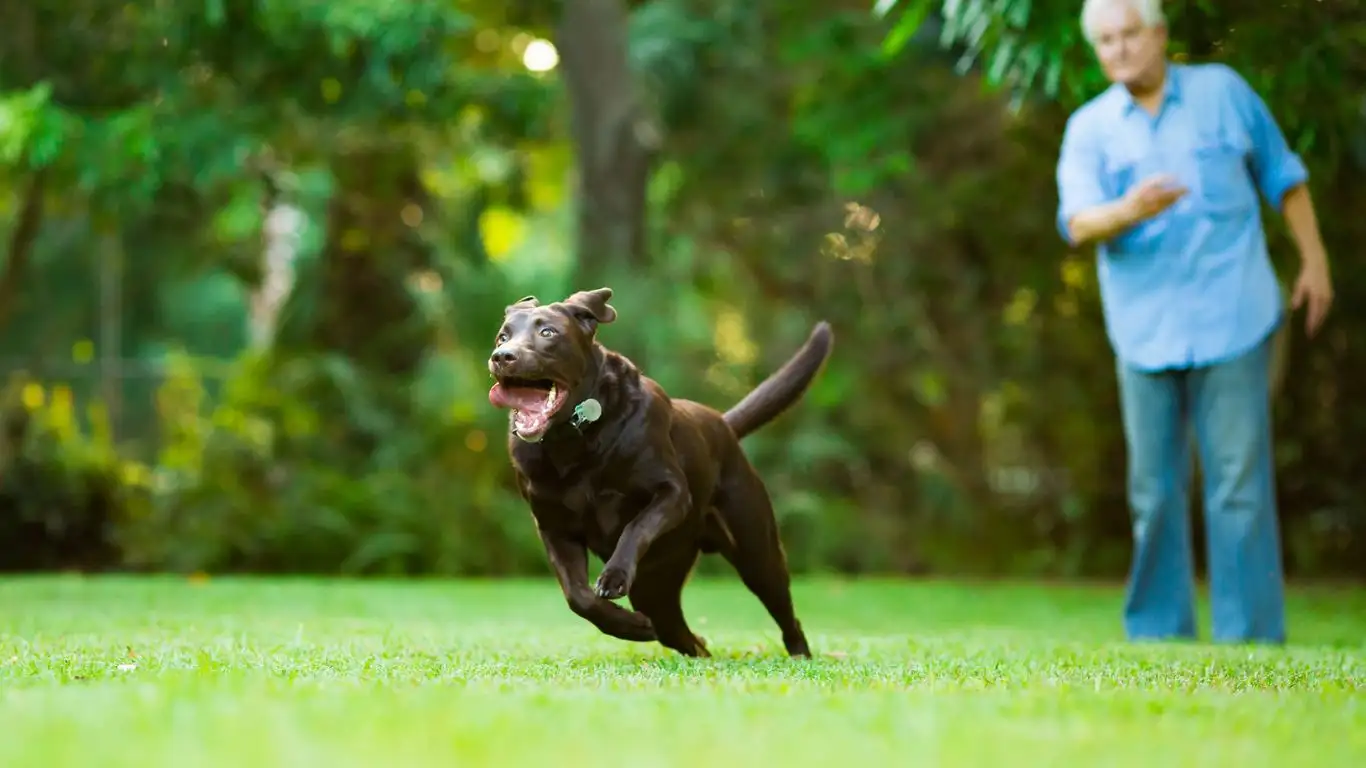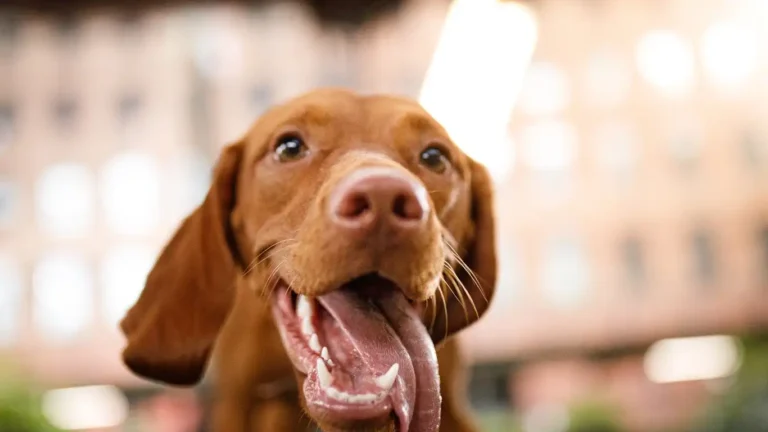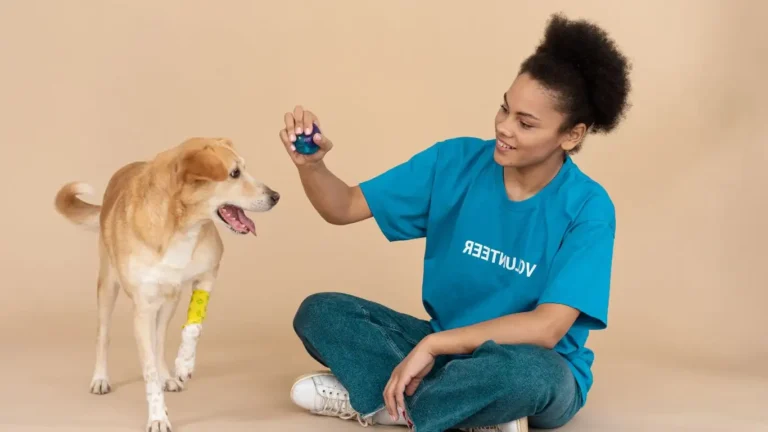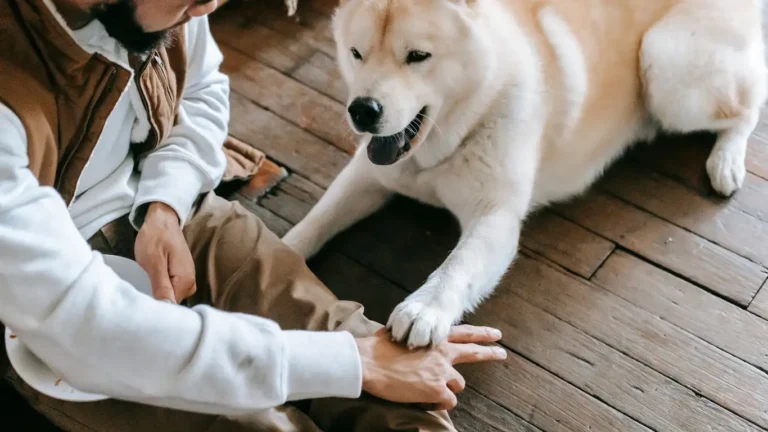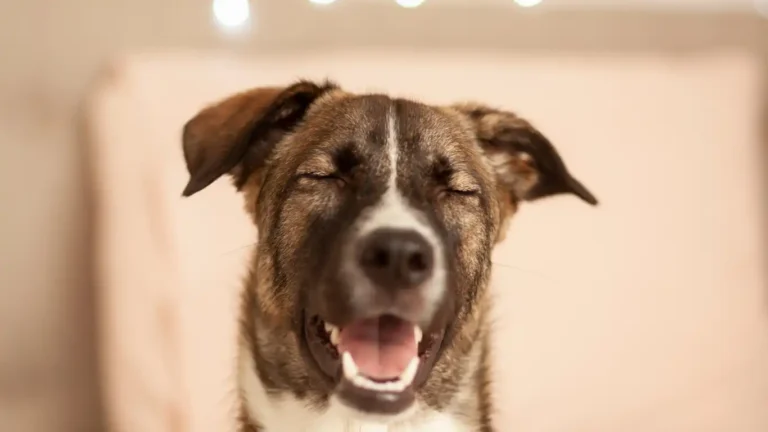How to Train a Dog to Not Jump When Excited: Proven Calm Dog Methods
If you’ve ever walked through your front door and been greeted by a flying furball of joy—paws flailing, tongue hanging, tail spinning like a windmill—you’re not alone. Teaching how to train a dog to not jump when excited is something I’ve tackled more times than I can count, especially working as a Canine-Assisted Therapy Trainer. Dogs mean well (bless their hearts), but excited jumping can be not only overwhelming, it can also be a bit dangerous—especially for kids, seniors, or anyone carrying a hot cup of coffee. In this guide, I’m diving into what actually works in the real world—not just textbook theory, but real, tail-wagging results from the field.
Why Dogs Jump: Understanding the Behavior
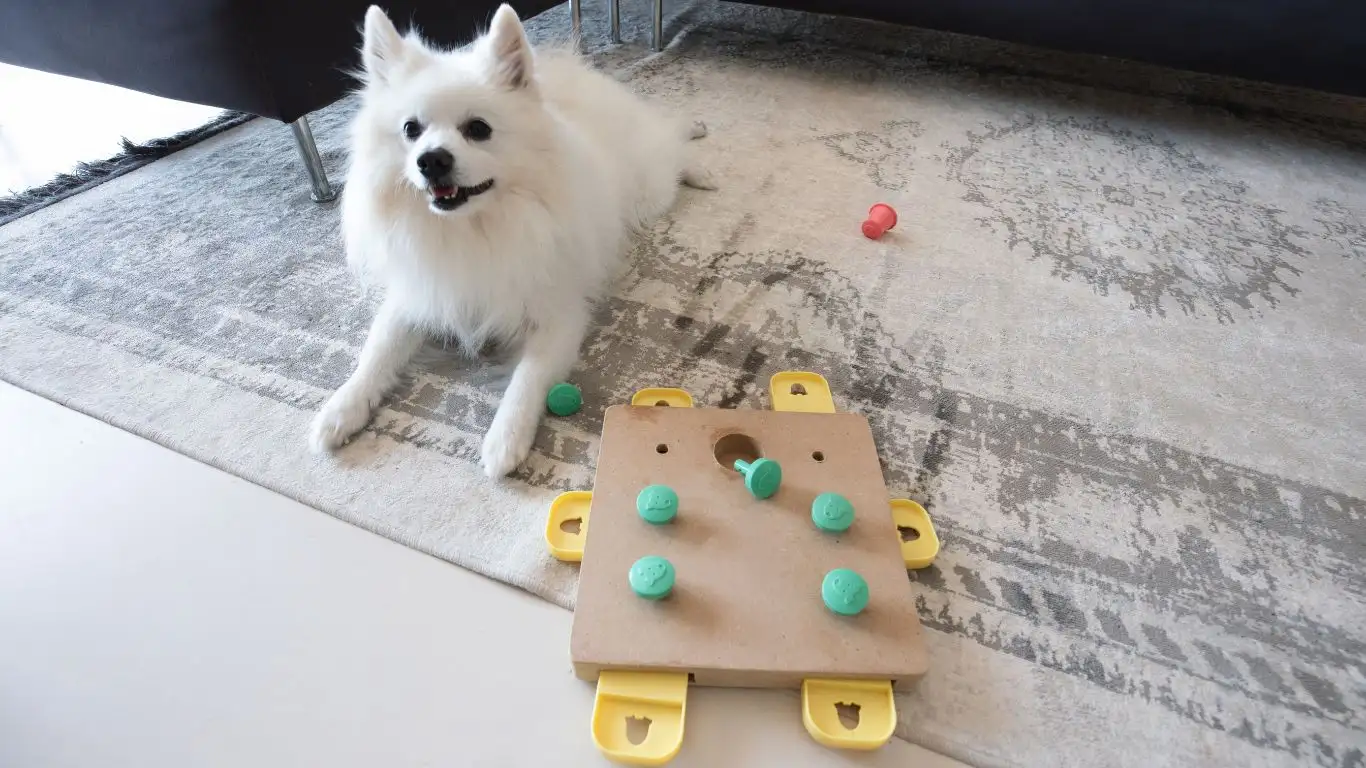
Let’s rewind for a sec. Before you can stop the behavior, it’s key to understand why it’s happening. Dogs aren’t trying to be “bad”—they’re social creatures with pretty straightforward motives.
- Excitement and joy: Jumping is often their happy dance.
- Seeking attention: Standing on two legs brings them closer to your face, and let’s face it—that’s where the love happens.
- Learned reinforcement: If jumping got a reaction (even a negative one), that can reinforce the behavior.
In many of my therapy sessions, I’ve met dogs who were unintentionally trained to jump. Their humans would push them off, yell, or even laugh—and to a dog, that’s all attention. They think, “Sweet! This works!”
Start with Calm Greetings

Here’s the deal—how you enter a room sets the tone. When I walk into a client’s home for a training session, I don’t come in hyped-up or flailing my arms. Dogs feed off our energy. If you’re amped, they’ll be amped. Instead, I encourage clients to follow these steps:
- Walk in calmly—no eye contact, no speaking.
- Wait for four paws on the ground.
- Only then offer quiet praise or affection.
Pro tip: Keep treats handy. Quietly drop a reward on the floor the moment they stay grounded. It shifts their focus from jumping to sniffing (a much calmer behavior). When repeated consistently, this can be a game-changer.
Teach an Incompatible Behavior
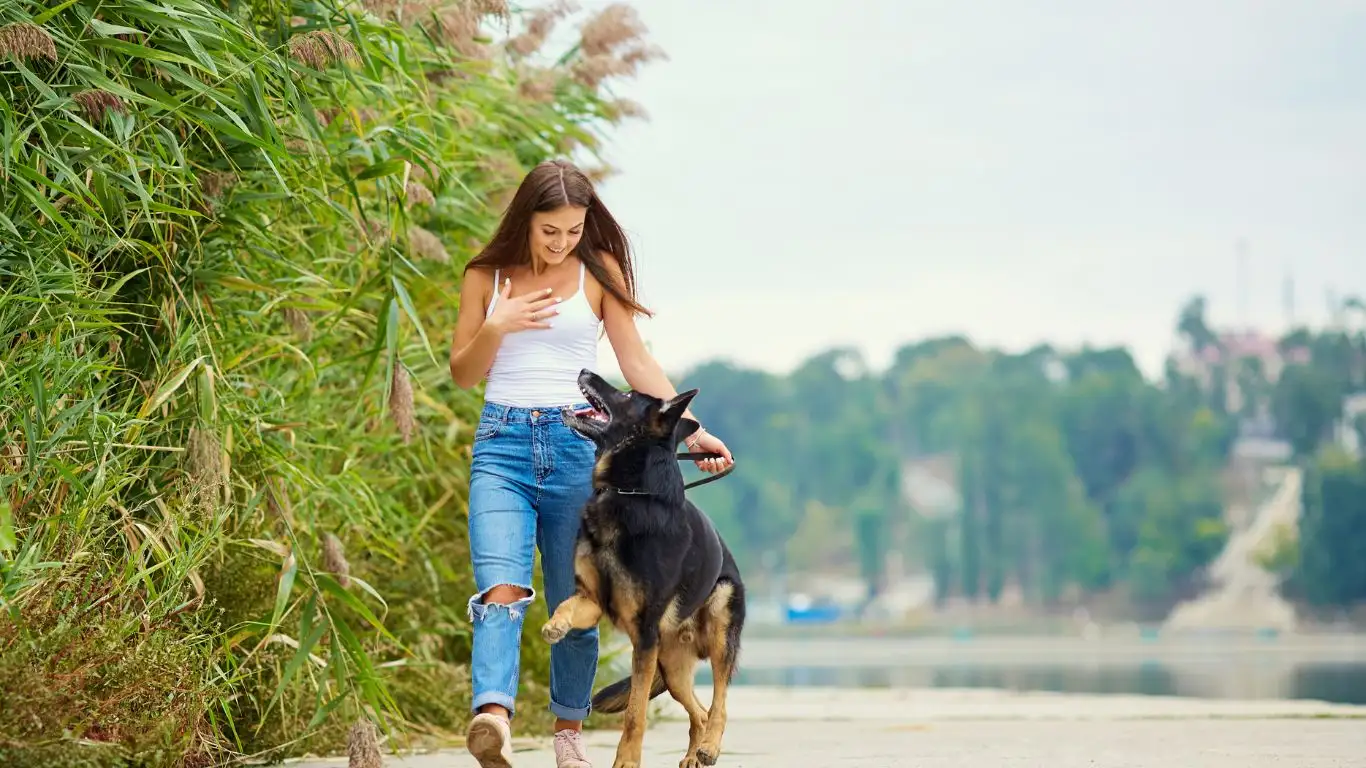
This is one of my favorite tools in the trainer toolkit. The idea is simple: you can’t jump if you’re sitting, right? I like to pair this with a cue like “sit to say hi.” It turns a greeting into a training opportunity. Here’s how to shape that:
Step-by-Step: Train “Sit for Attention”
- Approach your dog calmly with a treat in hand.
- Ask for a “sit.” (If they jump, back away—no reward.)
- Once they sit, mark with a word like “yes!” and give the treat.
- Repeat this consistently during greetings, feeding time, and random check-ins.
In one of my sessions with a young golden retriever named Max, this method worked wonders. He was so used to bouncing like a pogo stick when guests came over. We replaced the jumping with a sit-and-sniff routine that turned his greetings into polite little ceremonies. Guests were impressed. So was Max’s mom.
Use Management When Training Isn’t Possible
Sometimes, life gets in the way. You’ve got groceries in both hands and no time for a training moment. In those cases, managing the environment is key. Consider these tools:
- Baby gates: Block access to the entryway temporarily.
- Leash indoors: Keep them tethered nearby until calm.
- Crate or place command: Give them a defined space to settle.
Management doesn’t replace training, but it sure helps keep everyone safe and sane while the learning is in progress.
What Not to Do (Seriously, Don’t)
Okay, time for some real talk. There are a few things I’ve seen over the years that just don’t help—and in some cases, they can make things worse. Please avoid the following:
- Kneeing the dog in the chest: Ouch. That teaches fear, not manners.
- Yelling or scolding: You’re still giving attention, which is exactly what your pup is after.
- Inconsistency: Letting them jump “just this once” confuses them. Dogs need patterns to learn.
Training is about communication, not domination. I always tell clients, “Your dog isn’t giving you a hard time—they’re having a hard time.” Help them figure out what works, and they’ll respond better than you expect.
Reward Calm Like It’s Your Job
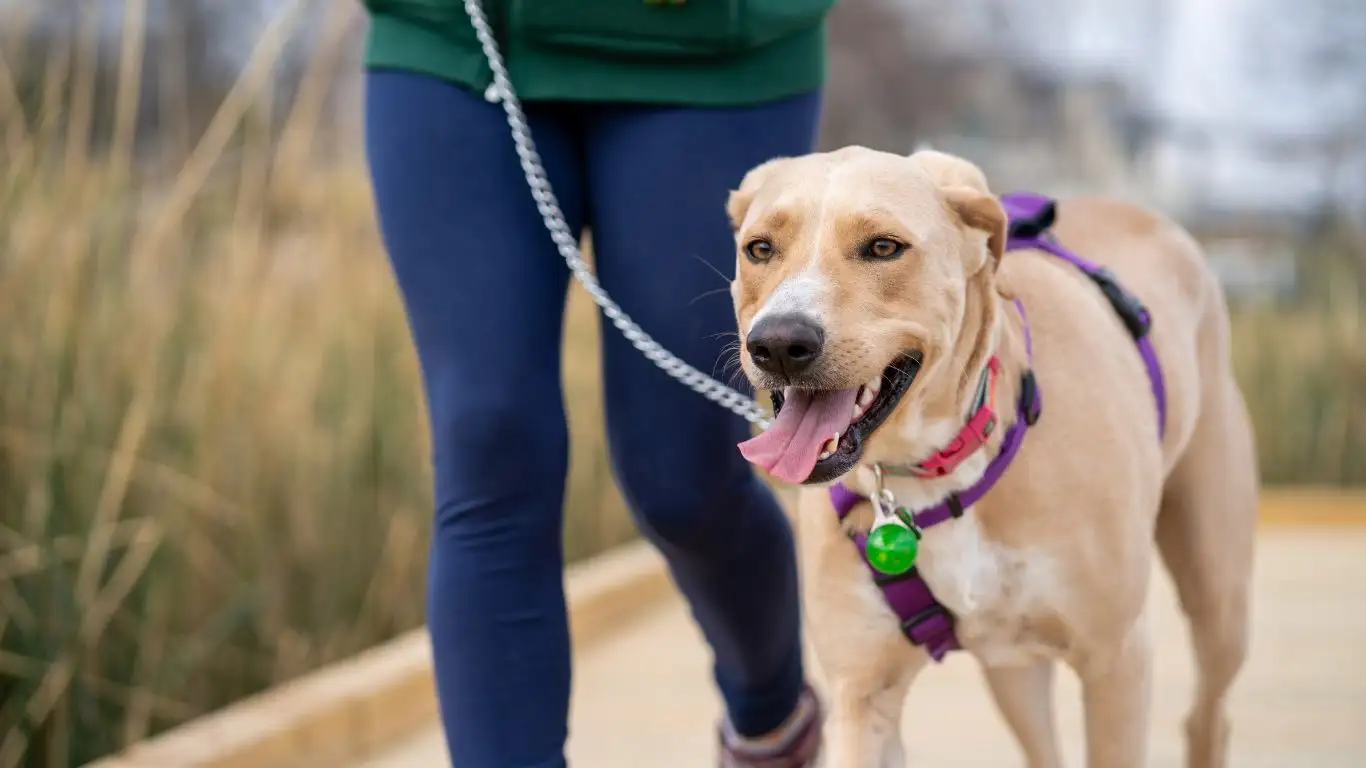
This might sound like a no-brainer, but you’d be surprised how often we forget to reward the good stuff. In my sessions, I tell clients all the time: “Reinforce what you want to see more of.” If your dog is just hanging out, not jumping, not barking, not zooming around like a cartoon character—that is golden behavior.
Most of us only notice the dog when they’re being loud or wild. But a calm dog? That deserves a jackpot. Toss a treat. Give a belly rub. Use your soothing voice. Over time, they’ll realize calm = reward. Jumping? Eh, not so much.
I had a session once with a lab named Bella who had two speeds—rocket ship or asleep. The key with her was micro-rewards. Every time she made the tiniest choice toward calm (like sitting instead of pouncing), she got instant reinforcement. Within a week, she was practically meditating by the front door before guests came in.
Consistency Is Everything—Like, Seriously
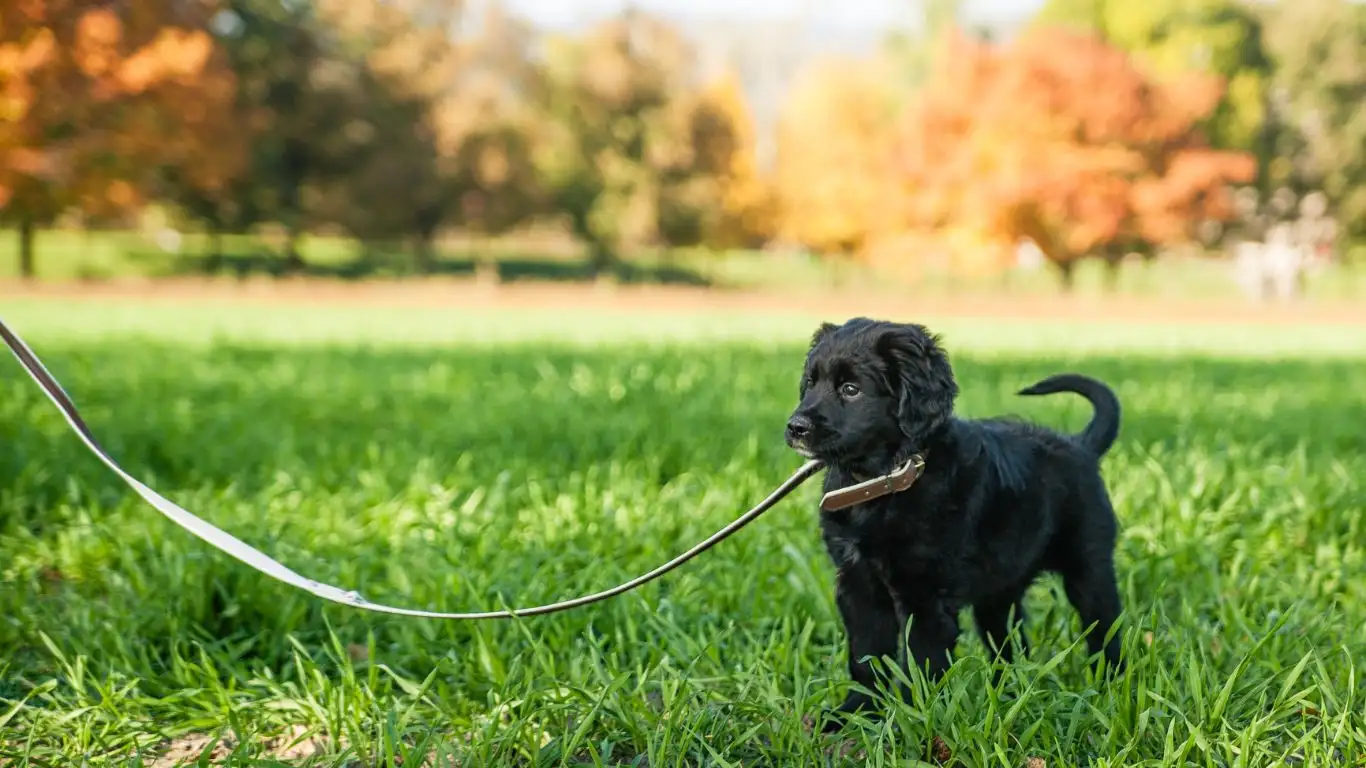
If I had a dollar for every time someone said “But he only jumps sometimes,” I could build my own off-leash dog park. Here’s the truth: dogs thrive on patterns. If your pup gets away with jumping even once in a while, it resets the learning clock.
That means everyone in the house has to be on board—family, roommates, even guests. (Yes, I’ve awkwardly asked clients’ visiting friends to follow the no-reward-until-calm rule. And yes, it’s worth the weird looks.)
Make a House Plan (Yep, Write It Down)
- Greeting routine: Decide exactly how you’ll handle arrivals—ignore until calm, cue a sit, or use a leash.
- Training words: Use the same cue for the same behavior. “Off” for stopping a jump, “sit” for a calm pose, etc.
- Who reinforces what: Make sure no one is sneaking cuddles during jumpy moments.
Even something as simple as a fridge chart can help keep everyone consistent. One of my clients had her kids draw “Dog Rules” with crayons. Not only adorable—but shockingly effective.
Practice Makes Progress: Controlled Setups
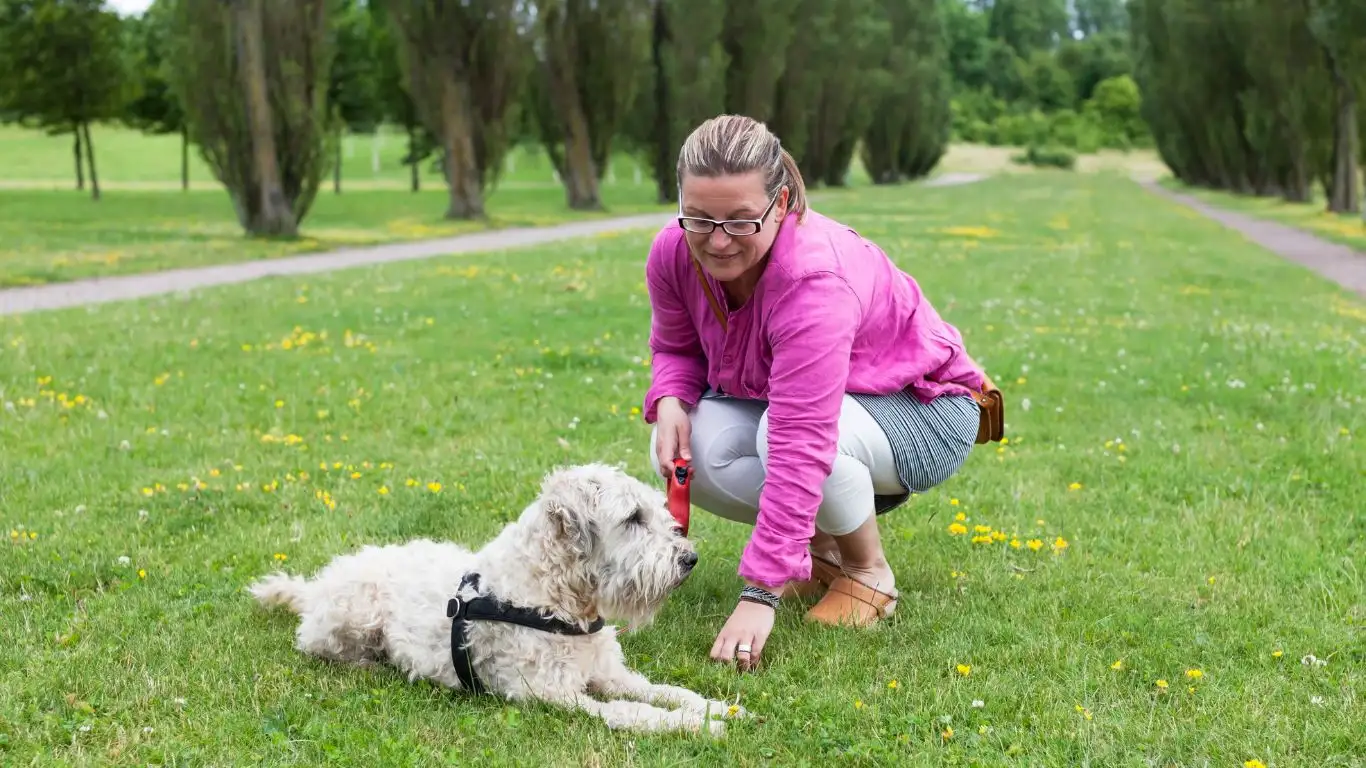
Random greetings in the wild are tough to control. That’s why I love doing mock greeting drills. Set the stage with a controlled setup. Here’s what I usually walk clients through:
- Have a friend act as the guest.
- Keep your dog on leash, near the door.
- Practice the doorbell or knock, then cue a sit.
- If your dog stays calm, your “guest” can slowly approach to offer a reward or greet.
- If they break the sit and jump, the guest turns around and leaves—no attention given.
It feels silly at first, but it works. One family I worked with did this daily for just 10 minutes a night with their dog, Oliver. By the end of week two, real guests were getting greeted like royalty—with four paws on the ground and zero chaos.
Mind the Breed and Personality
Let’s be real—not all dogs are wired the same. Some breeds are naturally high-energy greeters (hello, boxers and goldens), while others are more reserved. And beyond breed, each dog has its own personality quirks.
The key is to set realistic expectations based on who your dog is. A teenage husky is going to need more physical outlets and patience than a mellow senior pug. I’ve trained everything from Chihuahua mixes to Great Danes, and the biggest factor in progress is how well the training matches the dog’s temperament.
Tailor Your Tools
- For high-energy pups: Increase physical exercise and mental games before training sessions.
- For sensitive or shy dogs: Keep sessions shorter, quieter, and use softer praise.
- For stubborn or pushy types: Stay super consistent with boundaries and avoid giving in to “cute” jumps.
It’s not about forcing your dog to be someone they’re not—it’s about guiding them to be their best version, without the acrobatics at the front door.
When to Call in Backup
There’s no shame in asking for help—trust me. Some dogs just need a bit more guidance from a pro. If your pup is knocking people over, getting overly mouthy when excited, or seems stuck in a loop of hyper-jumping despite your best efforts, a certified trainer can step in with fresh strategies.
Look for someone who uses positive reinforcement, understands canine body language, and takes time to get to know your dog. Therapy work taught me that trust is everything. Dogs won’t learn from someone they’re scared of or confused by. And neither will humans, really.
Training should feel good. For both of you.
Turn Jumping Triggers Into Training Opportunities
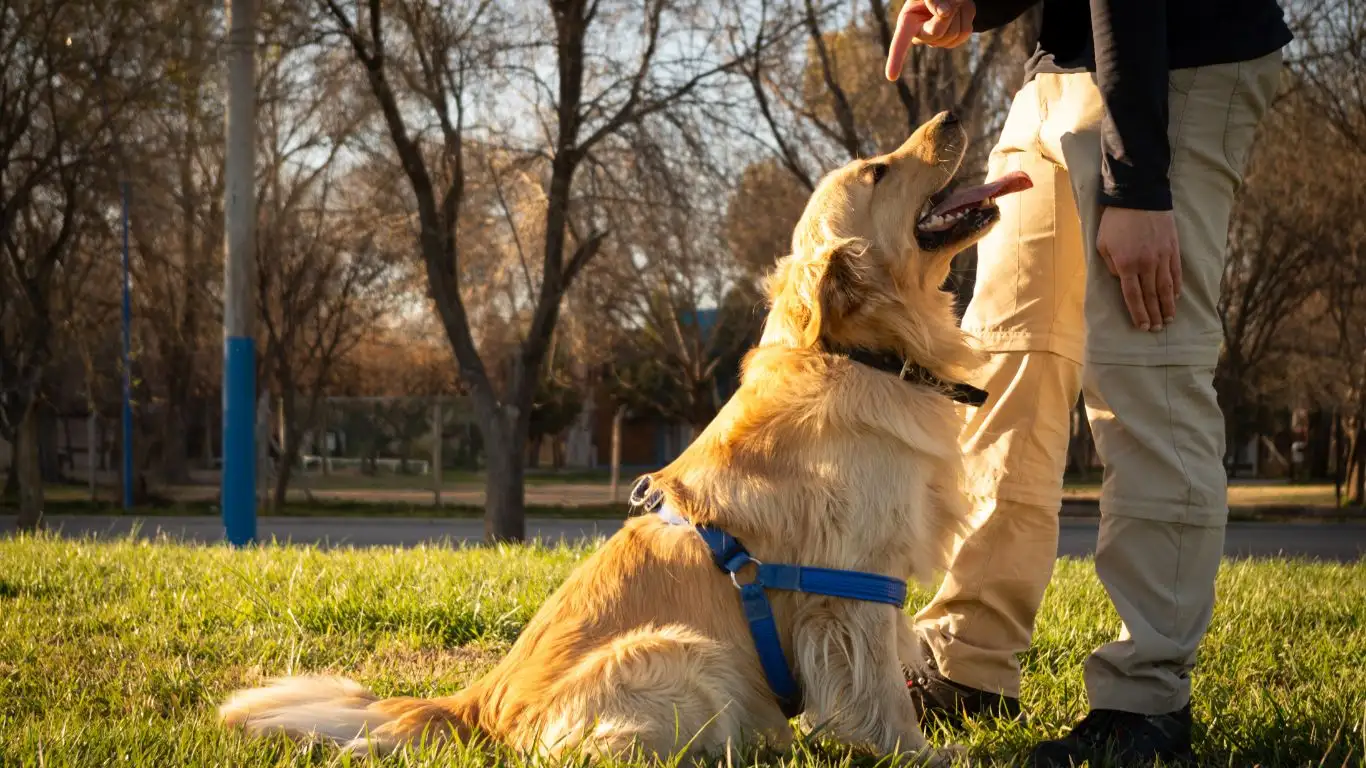
Here’s a trick I learned early on in my therapy training days: your dog’s biggest triggers—doorbells, guests, leash clips, even grabbing the treat jar—can all become built-in training moments if you flip the script. Instead of dreading the chaos that follows a knock at the door, use it as a prompt to practice your sit-for-greeting behavior. Predictable trigger? Predictable response.
For example, with one of my clients—a sweet but hyper border collie named Scout—we trained her to hear the doorbell and run to her mat instead of the door. We made it a game, and she loved it. Mat = treats and praise. Door = meh. Over time, Scout would bolt to her mat before anyone even touched the doorknob.
Tips to Turn Triggers into Progress
- Start before the excitement hits—timing is everything.
- Keep rewards high-value during high-energy situations (think tiny cheese cubes or freeze-dried liver).
- Repeat, reset, and be patient. Triggers make the learning stick when handled right.
By facing these everyday chaos moments head-on with structure and calm, you can transform your most frustrating moments into real wins. Your dog doesn’t need you to be perfect—just consistent, clear, and confident.
Celebrating the Small Wins
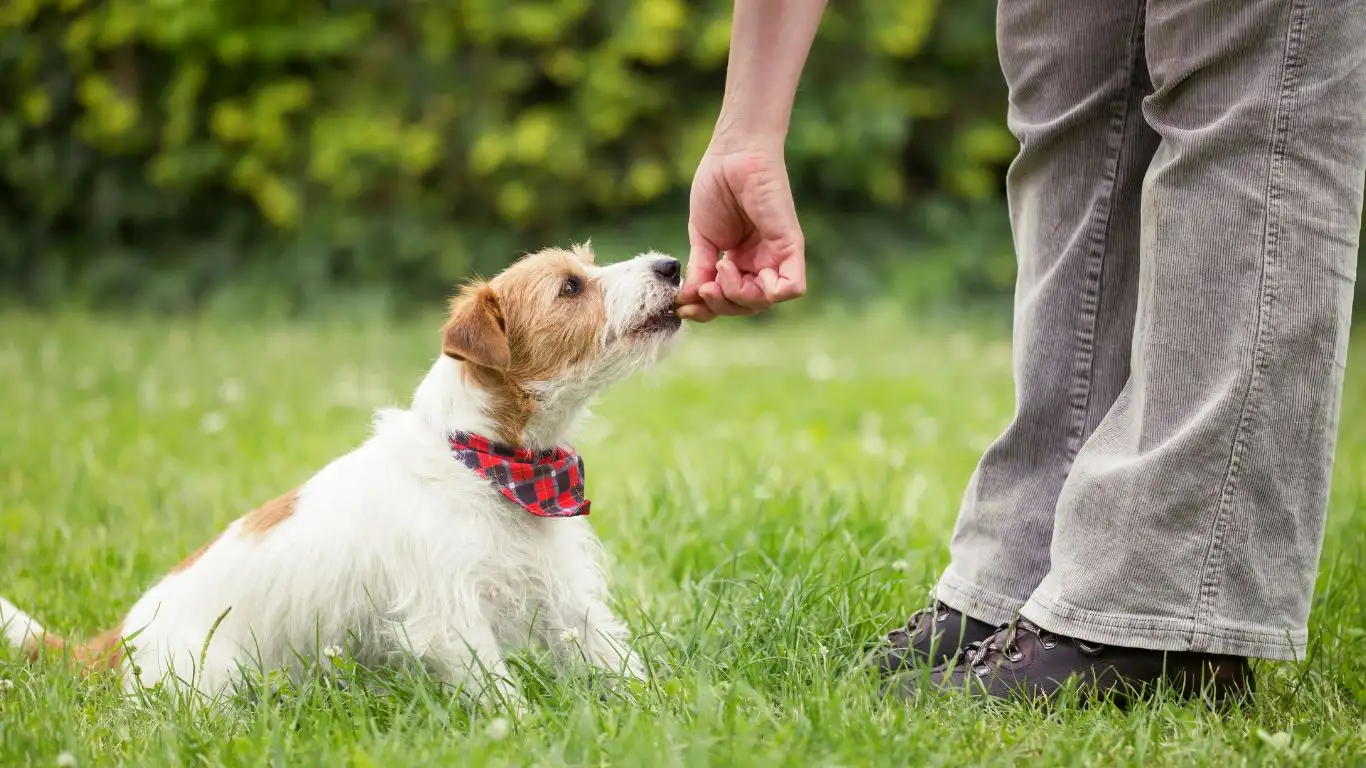
Look, changing behavior—especially excited jumping—isn’t something that happens overnight. And sometimes, progress looks like a three-second pause before the leap. That pause? Celebrate it.
I remember working with a rescue pit bull named Luna who had zero chill around new people. We started counting seconds. First, she lasted two seconds with four paws down. Then five. By week three, we hit twelve glorious seconds. It was all we needed to mark her success and layer in the sit cue.
Training isn’t a straight line. There are good days, flat days, and sometimes days where it feels like everything’s unraveling. But those small moments of calm—they build the foundation for long-term change.
Keep a Progress Journal
- Track how long your dog stays calm in greeting situations.
- Note the triggers that still make them jumpy.
- Celebrate with your dog—whether it’s an extra walk or an impromptu tug session.
Not only does this keep your morale up, it also gives you something tangible to look back on. Trust me—it helps on the days you feel stuck.
Helping Others Understand Your Dog’s Training
This part’s often overlooked, but it’s huge: helping other humans understand what you’re working on. Neighbors, visiting friends, even delivery folks—if they reward jumping (even with a laugh or pet), it can set your progress back.
So yes, sometimes you’ll feel like the neighborhood dog etiquette police. I’ve handed out homemade “dog in training” cards before (cringe, but effective) and politely coached more than one guest through our “please wait until he sits” rule.
It might feel awkward at first, but it makes a massive difference. You’re not just advocating for training—you’re advocating for your dog’s ability to succeed.
Here’s what I tell guests:
- “We’re working on calm greetings.”
- “Please ignore him until all four paws are on the floor.”
- “Once he sits, feel free to say hi or give him this treat.”
Most people respect it, and your dog learns that good behavior gets access to people. Jumping? Nope. Calm and polite? Jackpot.
Final Thoughts on Training a Dog Not to Jump When Excited
If you’re still with me—thank you. Seriously. That tells me you care deeply about your dog’s well-being and your relationship with them. And that’s the heart of this whole thing. Teaching how to train a dog to not jump when excited isn’t just about obedience—it’s about creating trust, building clear communication, and helping your dog feel safe and successful.
There’s no one-size-fits-all magic button. But with patience, consistency, and a little creative thinking, you’ll absolutely get there. And hey, when your pup finally greets someone with a sit and a soft tail wag instead of a flying leap—you’re gonna feel like a total rockstar. Because you are.
Helpful Resources & References
Disclaimer
The content in this article is intended for informational purposes only and does not constitute professional veterinary or behavioral advice. Always consult a certified dog trainer or your veterinarian regarding any specific issues your dog may be experiencing. Results may vary depending on your dog’s age, history, breed, and environment.
